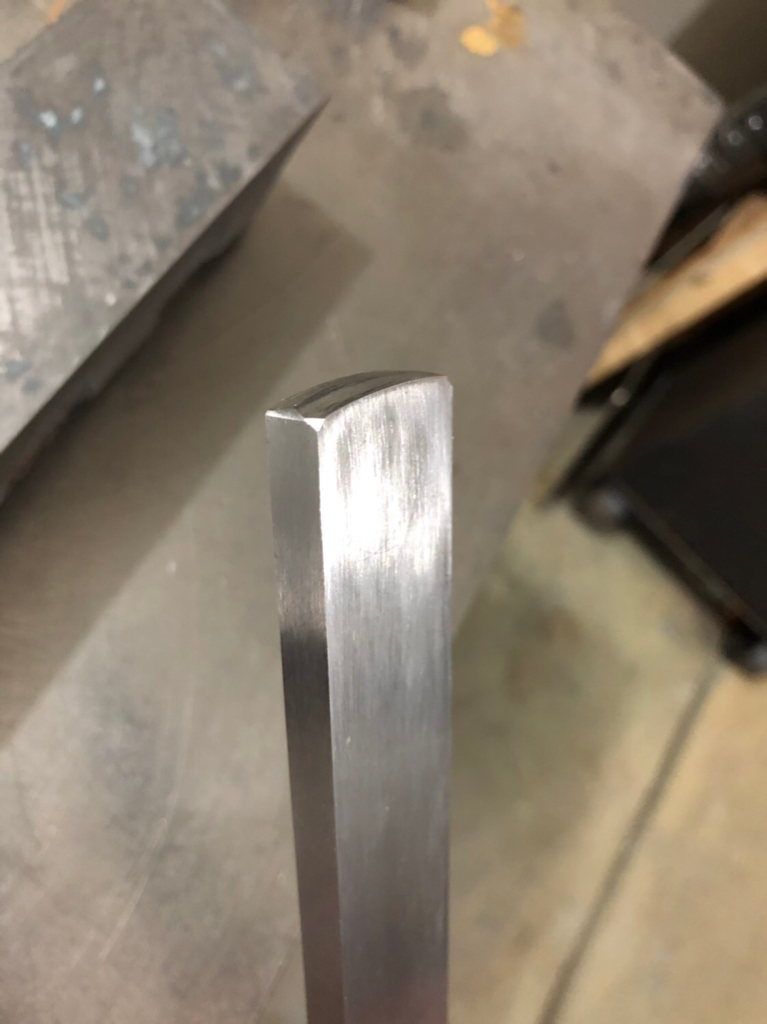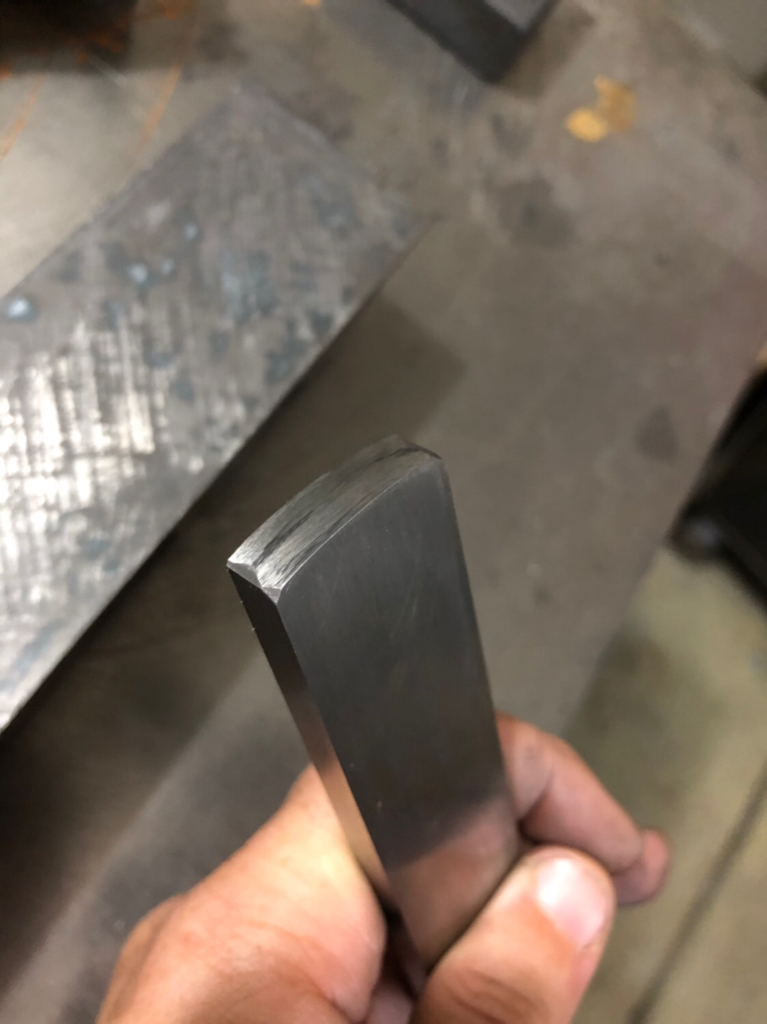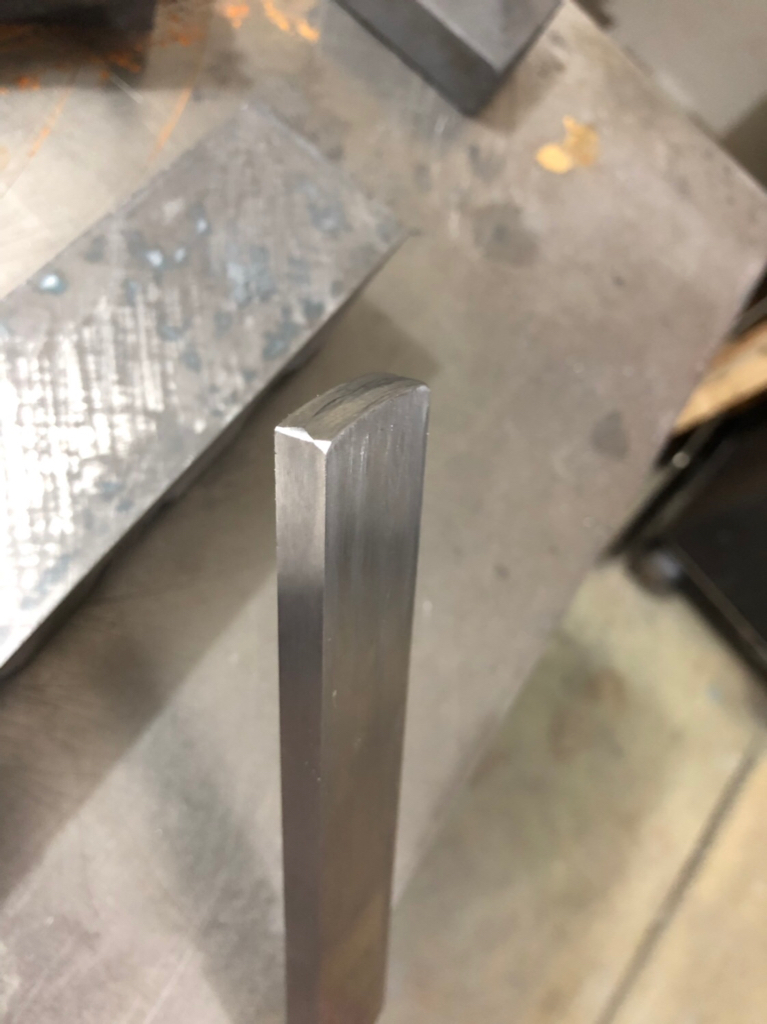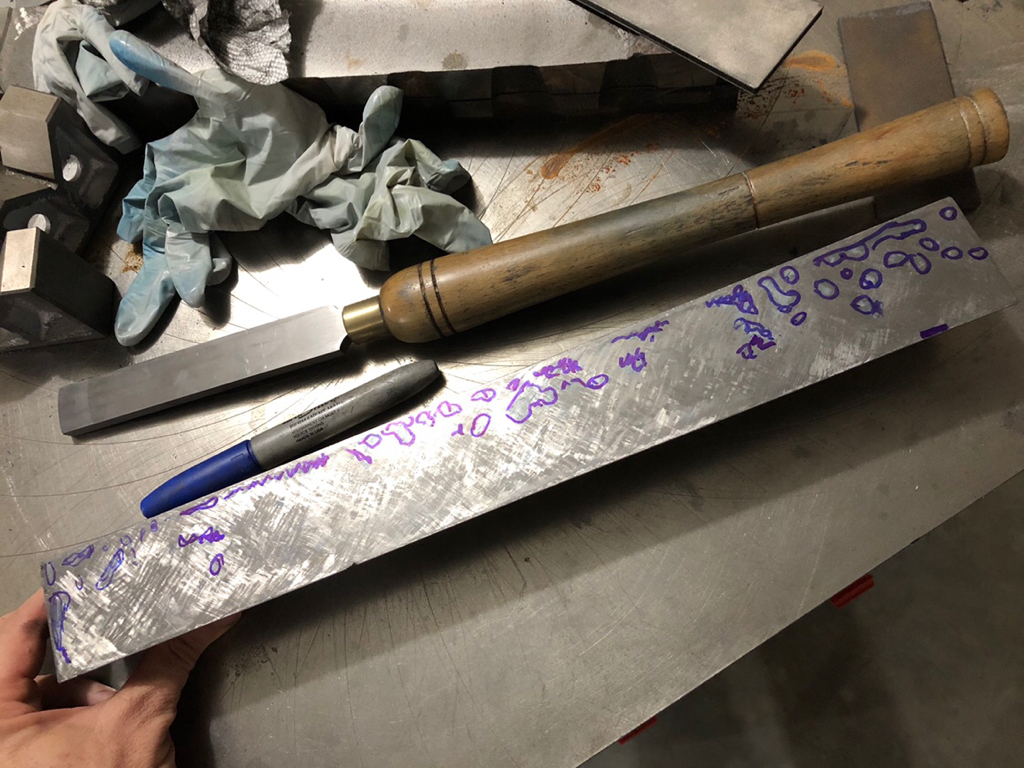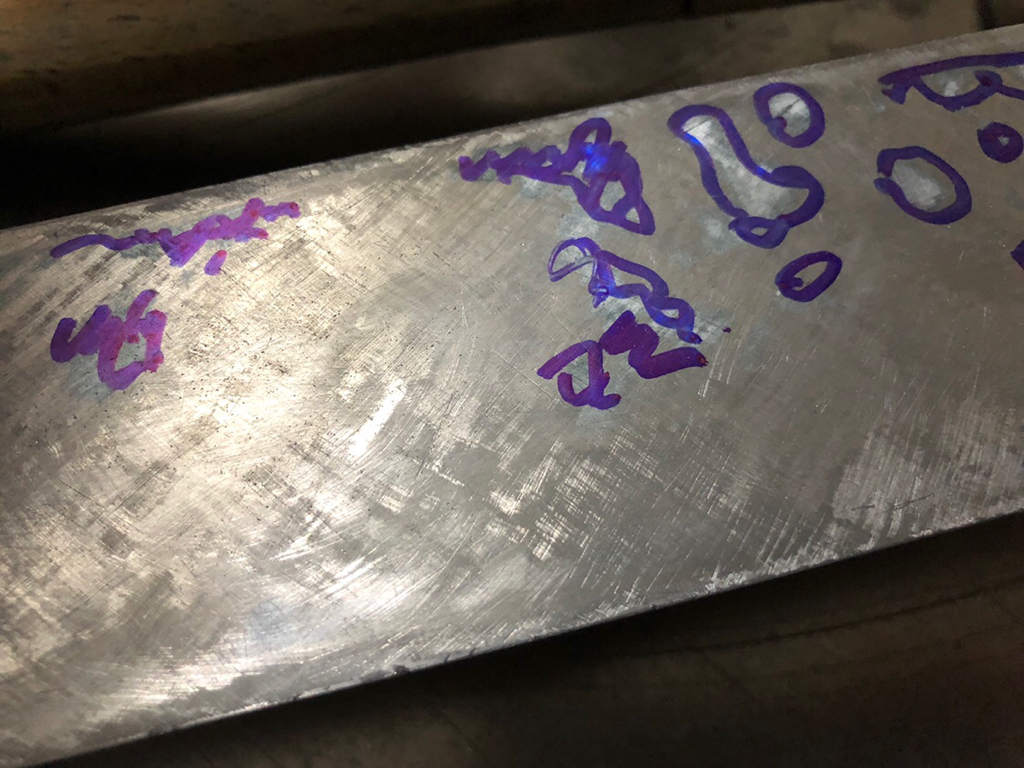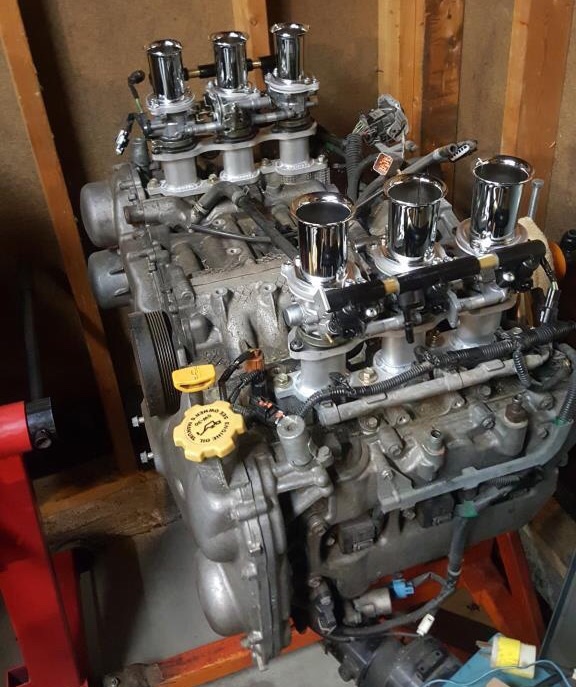- Joined
- Nov 9, 2018
- Messages
- 377
Hey all,
Let me introduce myself. I’m a research scientist at my day job (physics), and I’ve got a home shop with mill that I need to repair the knee gibs. So, I’m learning to scrape so I can repair it myself. I firmly believe you learn best by experimenting and figuring out things on your own, as reflected from the many classes I teach. Obviously I need a straight edge, and what better way to learn than building your own tools.
I started here with an old sewer grate. This good, well seasoned gray iron that’s very stable and easy to machine. First thing is I needed to see how stable this would be, so I created a finite element model and ran a few simulations to figure out how much it would bend. I calculated a max deflection of 25 millionths over 16” with a 20 lb-force load, I called that good. I figure, 20 lb-force is the most I’d ever push on it.
First challenge was cutting it, freeing the bars from the grate. First try was my carbide metal blade, which works awesome for steel. Didn’t work well on cast. My guess was the heat was hardening the surface of the iron, causing carbide precipitates to form. Next try was an abrasive disk for my Skill saw. That worked great.
Squaring the stock proved a bit of a challenge, in clamping it, as I don’t have an very big mill. But machined one surface flat, flipped it over and machined the other side in sections. With two sides now parallel, I could finally clamp it in the vise. Cast machined very nicely, got the faces flat and parallel at about 0.001 over 16”.
To machine the 45 angle, I used my 45 degree face mill, and moved both the Z and Y in 0.040 steps to make a nice continuous face. Left a 0.050 flat on the angle edge.
Now for the real test, how does experiment compare with mathematical model. Rigged it up on my surface plate, with a tenths indicator, and added a 20 lb-force load to the center. Sure enough, the needle moves just barely perceptibly. I’d say right about 25 millionths. So mathematical model verified.
Next steps: learning to scrape.
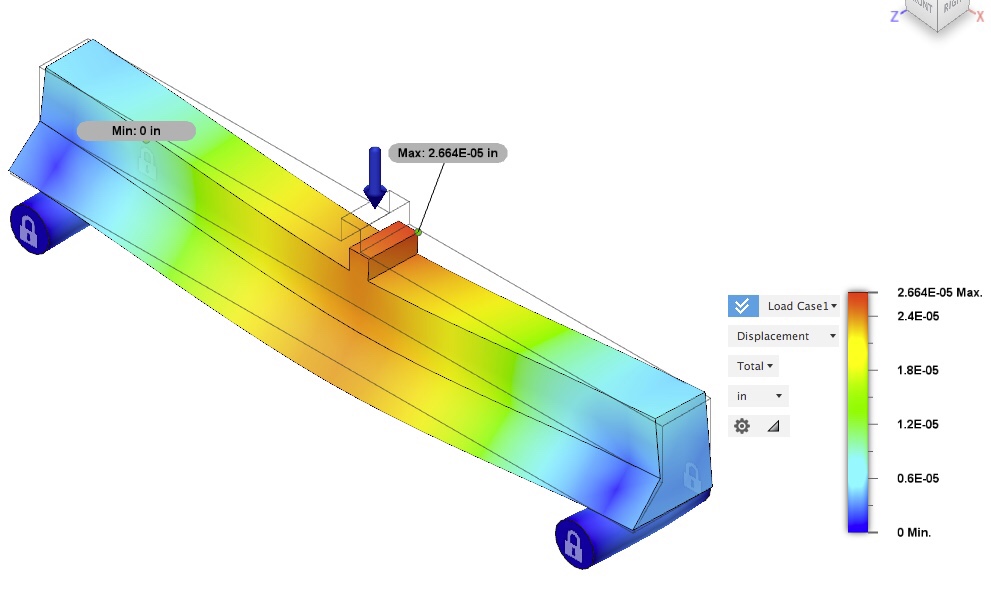
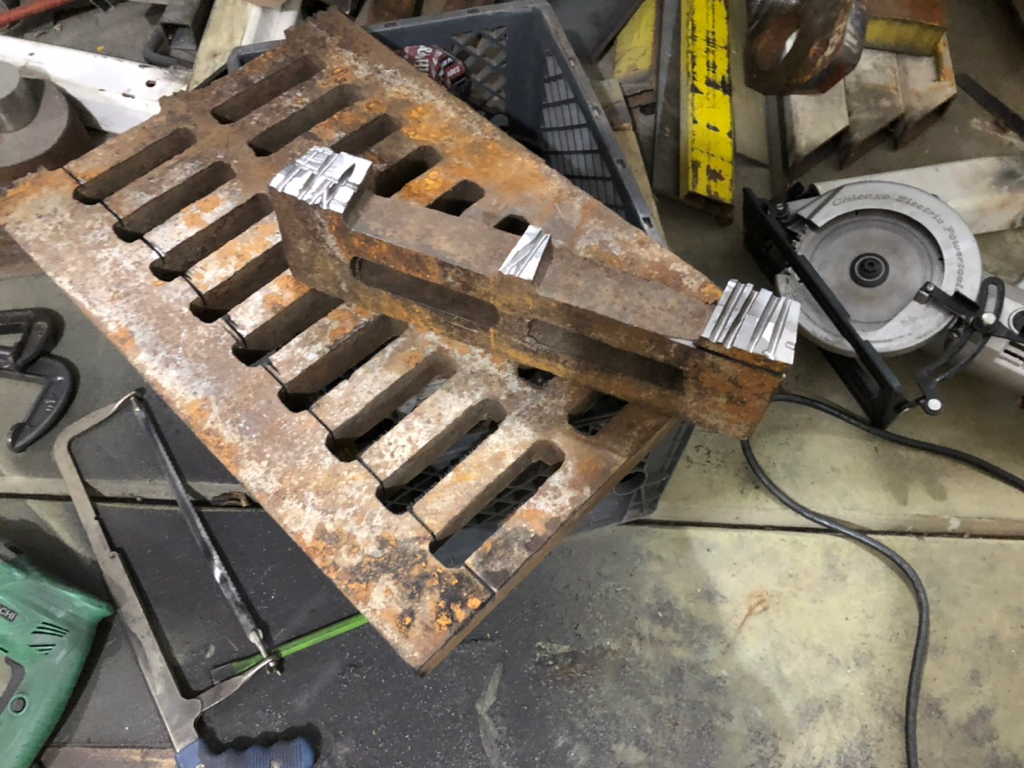
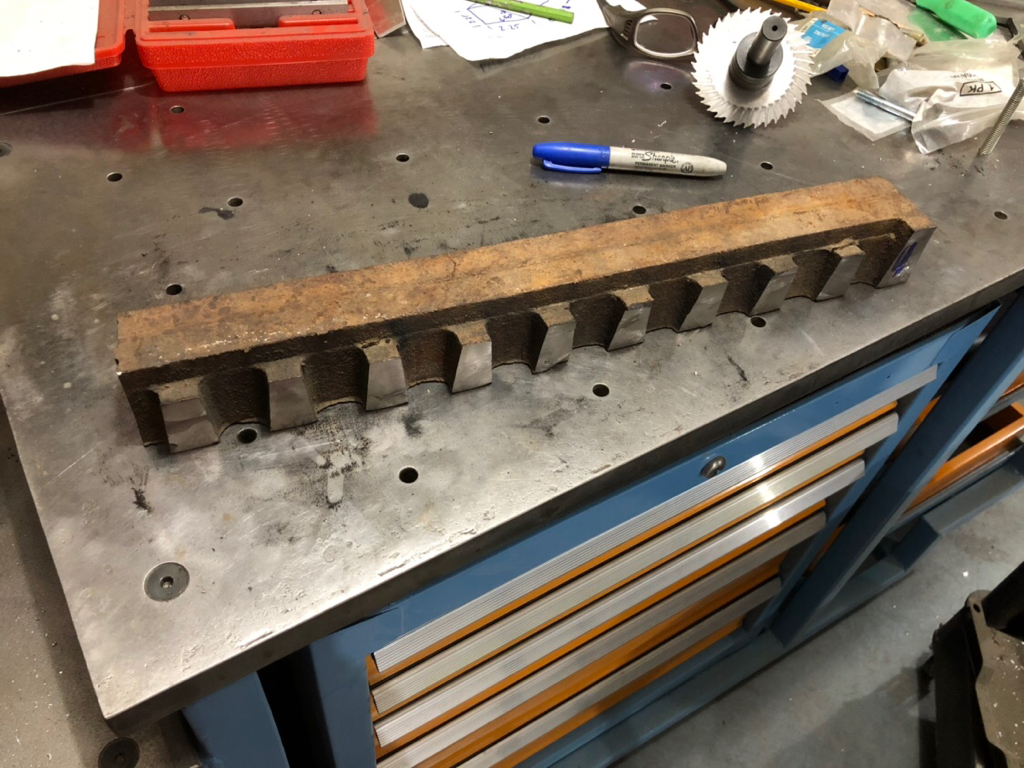
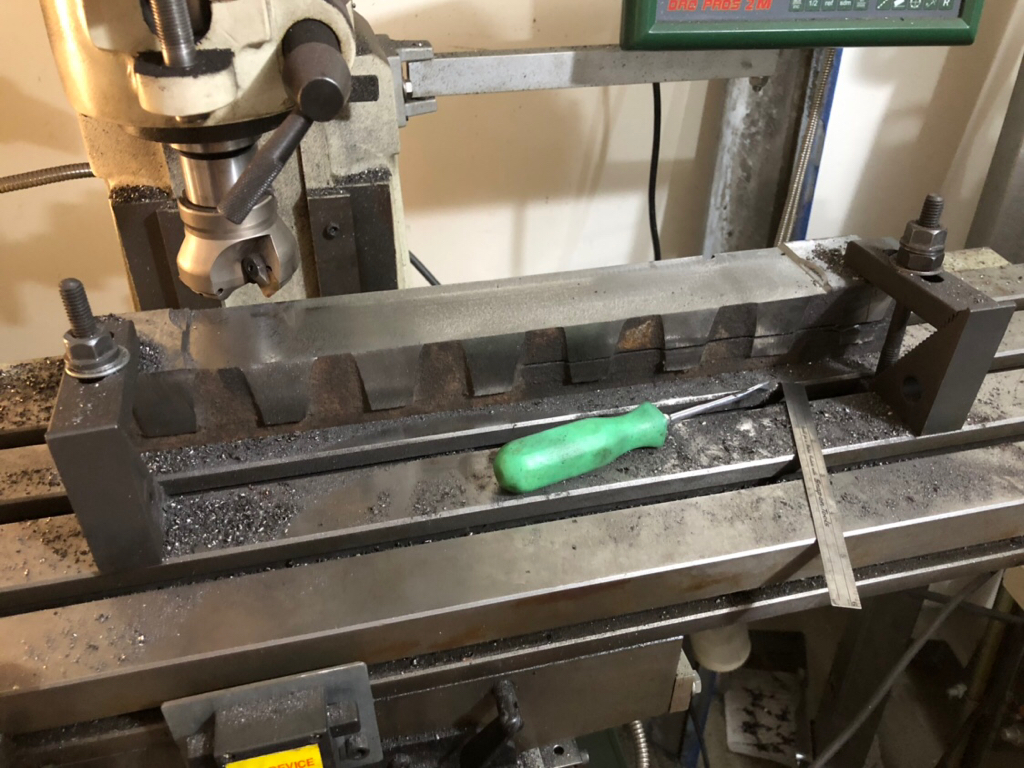
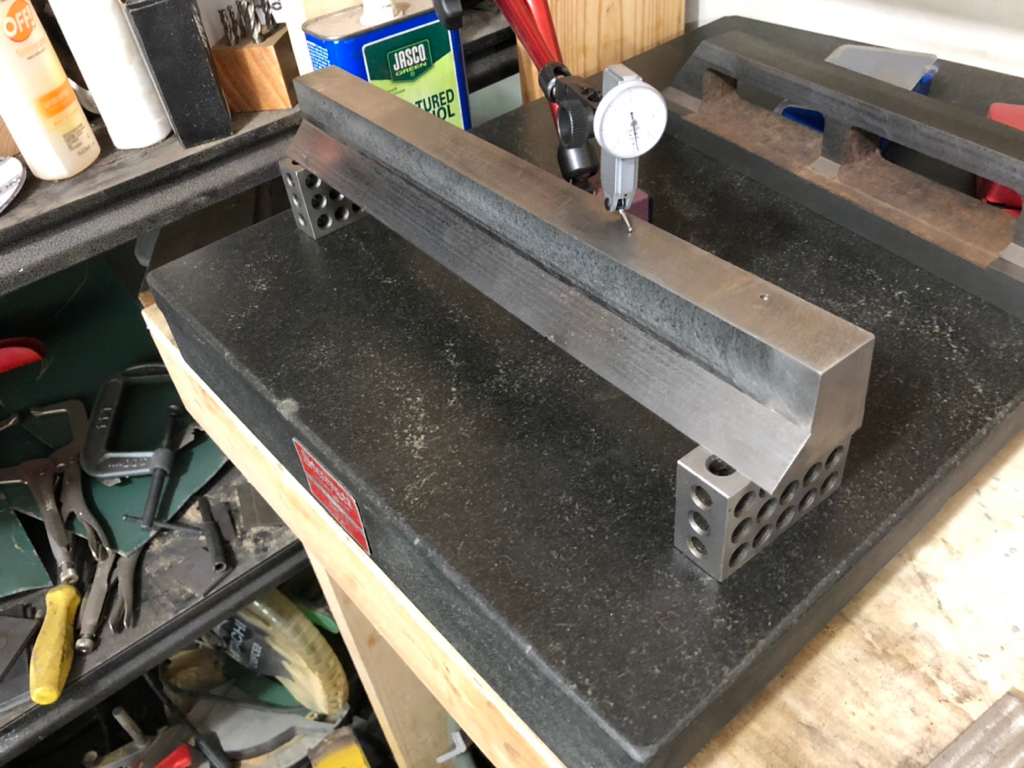
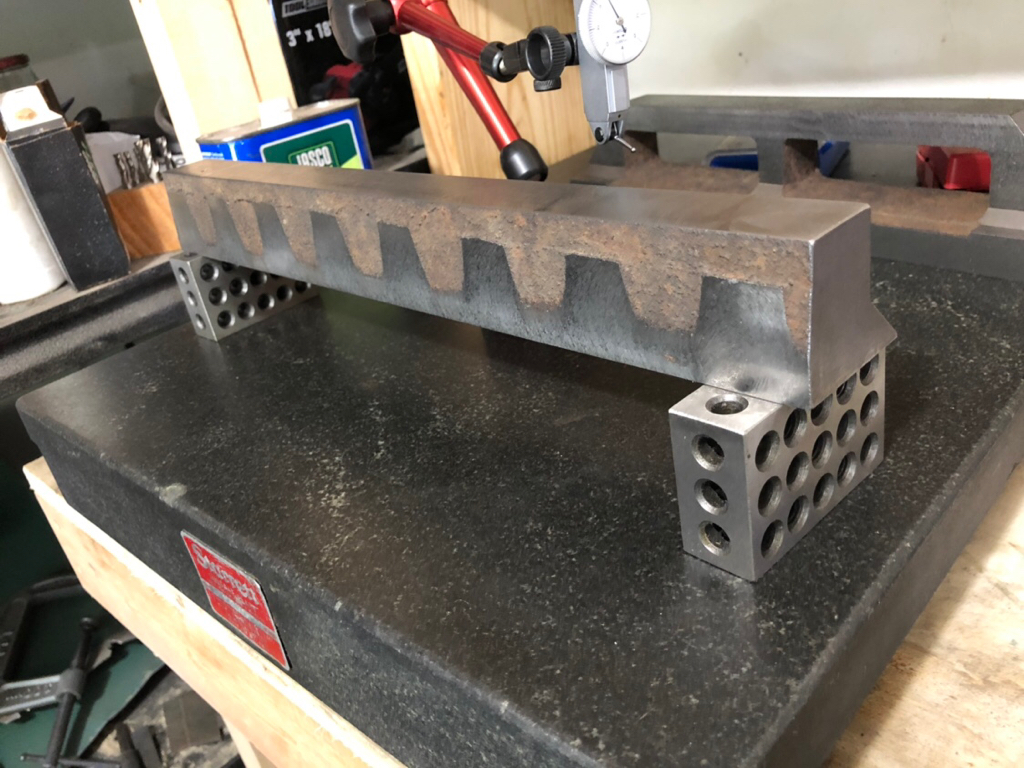
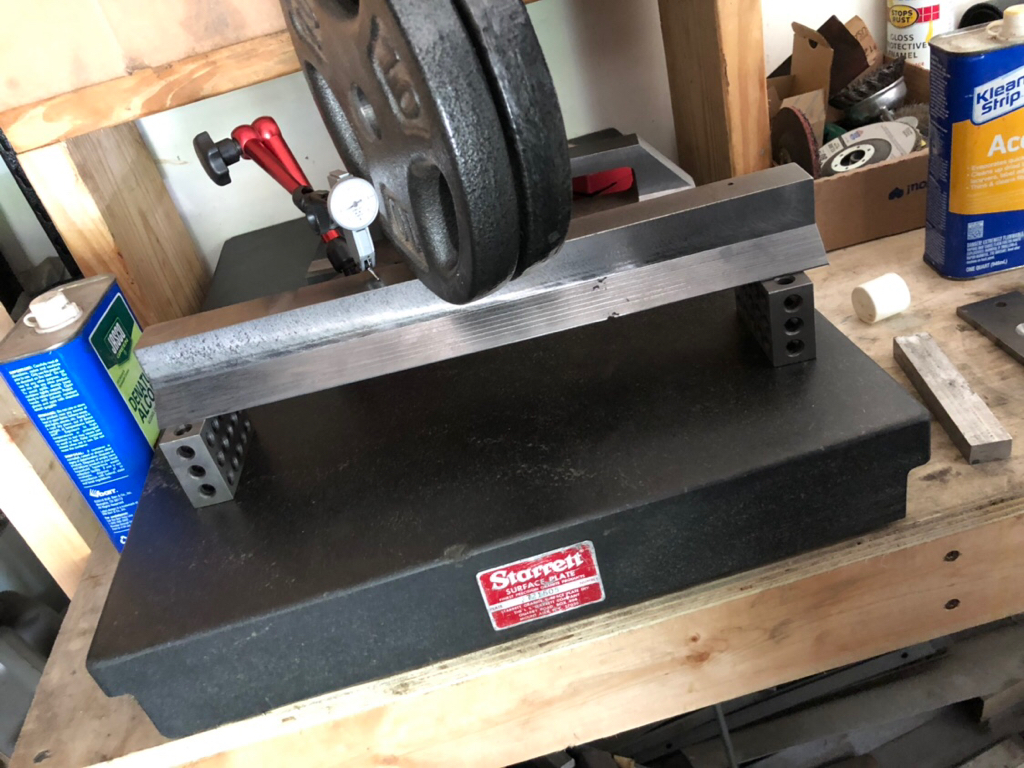
Sent from my iPhone using Tapatalk Pro
Let me introduce myself. I’m a research scientist at my day job (physics), and I’ve got a home shop with mill that I need to repair the knee gibs. So, I’m learning to scrape so I can repair it myself. I firmly believe you learn best by experimenting and figuring out things on your own, as reflected from the many classes I teach. Obviously I need a straight edge, and what better way to learn than building your own tools.
I started here with an old sewer grate. This good, well seasoned gray iron that’s very stable and easy to machine. First thing is I needed to see how stable this would be, so I created a finite element model and ran a few simulations to figure out how much it would bend. I calculated a max deflection of 25 millionths over 16” with a 20 lb-force load, I called that good. I figure, 20 lb-force is the most I’d ever push on it.
First challenge was cutting it, freeing the bars from the grate. First try was my carbide metal blade, which works awesome for steel. Didn’t work well on cast. My guess was the heat was hardening the surface of the iron, causing carbide precipitates to form. Next try was an abrasive disk for my Skill saw. That worked great.
Squaring the stock proved a bit of a challenge, in clamping it, as I don’t have an very big mill. But machined one surface flat, flipped it over and machined the other side in sections. With two sides now parallel, I could finally clamp it in the vise. Cast machined very nicely, got the faces flat and parallel at about 0.001 over 16”.
To machine the 45 angle, I used my 45 degree face mill, and moved both the Z and Y in 0.040 steps to make a nice continuous face. Left a 0.050 flat on the angle edge.
Now for the real test, how does experiment compare with mathematical model. Rigged it up on my surface plate, with a tenths indicator, and added a 20 lb-force load to the center. Sure enough, the needle moves just barely perceptibly. I’d say right about 25 millionths. So mathematical model verified.
Next steps: learning to scrape.







Sent from my iPhone using Tapatalk Pro


